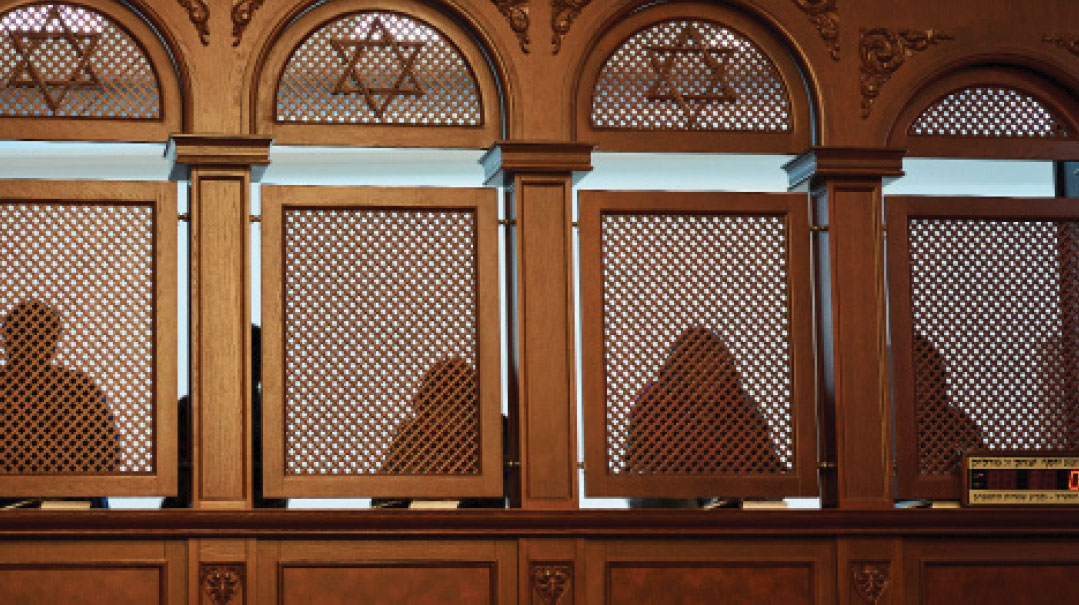In Harmony


Wives of famous chazzanim share what it’s like to be the woman behind the sheliach tzibbur

"In my eyes, chazzanus is a mission: to bring Jews closer to their Father in heaven,” says Miriam Weinbach, whose husband is Chazzan Dovid Weinbach.
In the Weinbachs’ home, as in every chazzan’s home, the awesome feeling of Elul and Tishrei arrives long before the months do. Chazzanim start practicing the haunting tunes — Hamelech, Hayom Haras Olam, Hayom Te’amtzeinu — preparing to lead their kehillos in teshuvah and tefillah. Their wives and children can sense the passion.
The wife of a chazzan is an active partner in his tefillos, says Shoshi Heller, wife of Chazzan Dov Heller. “Being a chazzan isn’t easy. It’s music without a keyboard, just the live voice with no external support. Even on your bad days or under uncomfortable conditions, you have to give your whole self and overcome the challenges.
“I’m very tuned in to the exercises and practice my husband does — and then I get to reap the fruit of all that preparation in real time in shul. I understand the small nuances. I know when it’s hard for him, when he’s struggling… at certain sections I know that in another moment he’ll be screaming, and I find myself taking a deep breath to fill my lungs with air, as if for both of us,” says Shoshi Heller. Paramount is the sense of mission these women feel, and their pride that their husbands are arousing Jewish hearts with their tefillos.
“I see people leaving Selichos feeling aroused to do teshuvah. I’m proud to have a part in that zechus,” says Miriam. “For the most part, my husband davens in front of kehillos where it’s not taken for granted that the people will come to shul on Yamim Noraim. When people hear that an excellent chazzan will be davening, they decide it’s worth it for them to leave their houses to daven. We have a real part in the tefillos of each person who participates in the tefillos on these holy days.
“My husband is a warm chassidish chazzan who sings with all his heart. His tefillos come from his soul, not from a desire to impress people. He has the ability to adapt himself to his audience,” she adds. “He can tell when the chazzanus is getting too heavy and the people are getting tired, when to add something, how to artfully weave in a new tune.”
“There are about a thousand people who daven in the shul where my husband davens,” says Shoshi Heller, “and most of them only come to shul on Rosh Hashanah and Yom Kippur. I see it as a tremendous zechus to send my husband to be a chazzan of those who are distant, to be the conduit for their tefillos to rise to the Kisei Hakavod.”
During the three weeks she spends alone with her children while her husband is abroad for the Yamim Noraim, Shoshi derives strength from the knowledge that with one moving tune, a chazzan can bring a young man considering intermarriage to make a different decision.
“You can never underestimate the impact of a powerful, passionate tefillah on the heart of a Jew,” she says.
Shoshana Adler, wife of Chazzan Chaim Adler, remembers davening in the Great Synagogue on Shabbos Rosh Chodesh Elul one year. The irreligious woman sitting next to her, not knowing she was the chazzan’s wife, told her, “Since I started coming to pray here, something has stirred in my heart. What a tefillah! I feel like I want to become religious.”
Being the wife of the chazzan also comes along with responsibility, Shoshana adds. The chazzan, like the rav, has a central role in the kehillah. “I know that I have to represent my husband properly,” she says. “I need to look and act dignified, to know how to accept the compliments and to answer nosy questions diplomatically.”
Oops! We could not locate your form.







